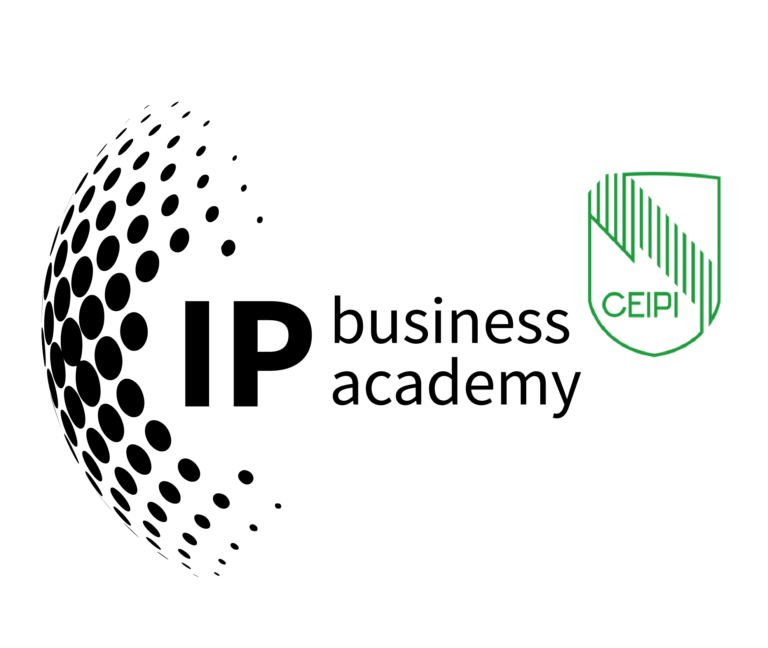Breaking Barriers: How TRIZ-Based Strategies Are Transforming Patent Circumvention
In the world of innovation, patents are both a shield and a challenge. They protect intellectual property while simultaneously creating obstacles for competitors. But what if there was a systematic way to navigate around these barriers without crossing the line into infringement? Enter TRIZ, a powerful methodology that transforms patent circumvention into a structured, creative process. In this blog post, we’ll explore the groundbreaking approach proposed in the research paper “Patent Circumvention Strategy Using TRIZ-Based Design-Around Approaches” by Julian F.J. Veldhuijzen van Zanten and Wessel W. Wits. This innovative strategy not only helps inventors design around existing patents but also fosters creativity and innovation in product development.
What Is Patent Circumvention, and Why Does It Matter?
Patent circumvention is the art of creating new products or solutions that avoid infringing on existing patents. Unlike patent infringement, which violates intellectual property laws, circumvention adheres to legal guidelines while pushing the boundaries of innovation. This practice is especially crucial in industries where incremental improvements are heavily patented, leaving little room for competition.
Veldhuijzen van Zanten, Julian F.J.; Wits, Wessel, W.; Patent circumvention strategy using TRIZ-based design-around approaches, Procedia Engineering 131 (2015) 798-806
However, traditional approaches to patent circumvention often lack structure and fail to provide clear guidance on how to navigate complex patent landscapes. This is where TRIZ (Theory of Inventive Problem Solving) comes into play.
Understanding TRIZ: The Engine Behind Innovation
TRIZ, developed by Genrich Altshuller, is a methodology that identifies patterns of problem-solving from millions of patents. It provides tools and techniques to overcome design challenges by avoiding “mental inertia” or tunnel vision. By leveraging TRIZ, inventors can systematically explore innovative solutions that bypass existing patents while adhering to legal frameworks.
Key principles of TRIZ include:
- Function Analysis (FA): Understanding how each component of a product contributes to its overall functionality.
- Function Analysis (FA) is a foundational TRIZ tool that helps dissect a product into its individual components to understand their roles and interactions. By identifying useful, insufficient, and harmful functions, FA provides a clear picture of how each part contributes to the overall system’s performance. This insight is crucial for pinpointing areas where improvements can be made or unnecessary elements can be removed, paving the way for innovative and efficient design solutions.
- In the context of patent circumvention, FA is particularly valuable because it helps identify components that may overlap with patented claims. By analyzing these overlaps, inventors can strategically redesign or eliminate certain features to avoid infringement. Additionally, FA enables teams to visualize the “ideal final result” (IFR) — a concept in TRIZ that represents the most efficient version of a product — guiding them toward optimal solutions.
- Overall, Function Analysis serves as a critical first step in the TRIZ methodology, providing the clarity and structure needed to tackle complex design challenges systematically. It ensures that every component is evaluated not just for its necessity but also for its potential to inspire creative alternatives.
- Contradiction Matrix: Resolving technical or physical contradictions in design.
- The Contradiction Matrix is one of TRIZ’s most powerful tools for addressing conflicts in design, such as when improving one aspect of a product negatively impacts another. It helps identify “technical contradictions” (e.g., increasing strength while reducing weight) and “physical contradictions” (e.g., needing a material to be both rigid and flexible). By mapping these contradictions onto the matrix, inventors are guided toward specific inventive principles that have historically resolved similar conflicts.
- This tool is particularly effective in patent circumvention because many patented innovations are built around resolving specific contradictions. The Contradiction Matrix allows designers to approach these challenges from a fresh perspective, identifying alternative ways to achieve the same goals without infringing on existing patents. For example, if a patented solution relies on adding material for durability, the matrix might suggest alternatives like using new materials or altering structural geometry.
- By systematically addressing contradictions, the Contradiction Matrix fosters breakthrough thinking and ensures that new designs are both innovative and legally distinct from existing patents. It transforms seemingly unsolvable problems into opportunities for creative exploration.
- 40 Inventive Principles: A set of strategies for overcoming design challenges.
- The 40 Inventive Principles are a cornerstone of TRIZ, offering a comprehensive toolkit for solving engineering problems through proven strategies. These principles—ranging from “segmentation” (breaking a system into smaller parts) to “dynamics” (allowing flexibility in design)—provide actionable guidance for overcoming obstacles in product development. Each principle is accompanied by real-world examples, making it easier for inventors to apply them to their specific challenges.
- In patent circumvention, the 40 Inventive Principles serve as a rich source of inspiration for creating non-infringing alternatives. For instance, if a patented product achieves functionality through mechanical means, one principle might suggest replacing it with an electromagnetic solution. This approach not only avoids infringement but often leads to more efficient or cost-effective designs.
- The versatility of these principles makes them applicable across industries and problem types, ensuring that inventors have multiple pathways to explore when faced with design constraints. By encouraging out-of-the-box thinking, the 40 Inventive Principles help unlock innovative solutions that respect intellectual property boundaries while advancing technological progress.
- Substance-Field (Su-field) Models: Abstract representations of system interactions to identify novel solutions.
- Substance-Field (Su-field) Models provide a high-level abstraction of how different elements in a system interact with one another through substances (materials) and fields (forces or energies). This tool helps identify inefficiencies or gaps in these interactions and suggests ways to improve them using inventive standards derived from TRIZ research. By visualizing systems at this abstract level, inventors can uncover novel approaches that might not be immediately obvious through traditional analysis.
- In patent circumvention scenarios, Su-field modeling is particularly useful for reimagining how a product achieves its functionality. For example, if a patented design relies on mechanical contact between components, Su-field analysis might reveal opportunities to replace this interaction with magnetic fields or other non-mechanical forces. This shift not only bypasses existing patents but can also lead to more advanced and reliable designs.
- The strength of Su-field models lies in their ability to simplify complex systems into manageable components while retaining their essential characteristics. This abstraction encourages innovative thinking and ensures that new solutions are both effective and distinct from existing technologies. By leveraging Su-field models, inventors can confidently navigate patent landscapes while pushing the boundaries of innovation.
The Four-Step Patent Circumvention Process
The research paper outlines a four-step process for systematic patent circumvention:
1 . Information Gathering
This step involves collecting detailed information about the product and its associated patents. Key activities include:
– Function Analysis (FA)
Mapping out the interactions within the product to identify useful, insufficient, and harmful functions.
– Patent Search and Analysis
Using manual or automated tools to create a comprehensive overview of relevant patents.
2 . Landscaping Patents and Claims
Once information is gathered, patents are categorized into three types of problems:
– Unnecessary Elements
Components that can be removed without affecting functionality.
– Types of Limitations
Shortcomings or bottlenecks in the current design.
– Potential Disadvantages
Harmful side effects or inefficiencies in the product.
This categorization serves as a roadmap for identifying opportunities for innovation.
3 . Applying Design-Around Approaches
Based on the categorized problems, specific TRIZ tools are applied:
– For Unnecessary Elements, techniques like trimming and functional idealization are used.
– For Types of Limitations and Potential Disadvantages, methods like Root Contradiction Analysis (RCA+), Su-field modelling, and the 40 Inventive Principles help generate novel solutions.
4 . Feasibility and Infringement Analysis
Finally, each proposed solution is evaluated for feasibility and tested against patent infringement laws using rules like:
– The “All Elements Rule“: Ensuring the new design does not replicate all elements of an existing claim.
– The “Doctrine of Equivalents“: Verifying that the new solution performs its function in a substantially different way.
Case Study: Reinventing the Constant Velocity Joint
To demonstrate the effectiveness of this strategy, the researchers applied it to an industrial case study involving a Rzeppa Constant Velocity (CV) joint—a key component in automotive drive shafts.
- Step 1: Information Gathering
The team analyzed physical CV joints and consulted experts to understand their functionality. A manual patent search revealed numerous incremental improvements patented by competitors.
- Step 2: Landscaping Patents and Claims
Relevant patents were categorized into unnecessary elements (e.g., stopper rings), limitations (e.g., backlash between components), and disadvantages (e.g., noise generation). This categorization highlighted areas ripe for innovation.
- Step 3: Applying Design-Around Approaches
Using RCA+, the team identified “too much clearance between components” as a root contradiction causing backlash. By applying TRIZ’s inventive principle #2 (“taking away”), they proposed eliminating the hole within the inner race and friction-welding it directly to the shaft. This solution removed backlash entirely without adding new components.
- Step 4: Feasibility and Infringement Analysis
The friction-welded design was deemed feasible for applications where disassembly was not required. Importantly, it avoided infringement under the “Doctrine of Equivalents” by performing its function in a substantially different way.
Key Takeaways from the Research
Structured Innovation
The TRIZ-based approach revolutionizes patent circumvention by introducing a structured methodology to replace the traditionally ad-hoc processes. This systematic framework enables inventors to analyse existing patents, identify opportunities for innovation, and develop non-infringing solutions with precision. By leveraging tools like Function Analysis, RCA+, and the 40 Inventive Principles, the approach ensures that every step in the design process is guided by proven problem-solving techniques, fostering confidence and clarity in navigating complex patent landscapes.
Moreover, this structured process reduces guesswork and inefficiencies, making it easier for teams to focus on creating value-driven innovations. Whether addressing unnecessary elements or resolving technical contradictions, the methodology provides a clear roadmap to bypass existing patents while adhering to legal standards. Ultimately, this approach empowers inventors to transform constraints into opportunities for groundbreaking advancements in their fields.
Legal Compliance
The TRIZ-based strategy prioritizes adherence to infringement laws such as the “All Elements Rule” and the “Doctrine of Equivalents,” ensuring that new designs remain legally safe. By systematically analysing patent claims and understanding their scope, inventors can create solutions that are substantially different in function, method, or result from existing patents. This legal rigor not only protects innovators from potential lawsuits but also enhances the patentability of their new designs.
In addition to compliance with international norms, the approach encourages inventors to consider local patent laws specific to their target markets. This adaptability ensures that solutions are tailored to regional legal frameworks, reducing risks associated with cross-border intellectual property disputes. As a result, companies can confidently innovate without fear of infringing on competitors’ patents while maintaining their competitive edge in the marketplace.
By embedding legal considerations into every step of the design process, this strategy bridges the gap between creativity and compliance. It transforms patent circumvention into a proactive and responsible practice that respects intellectual property rights while fostering innovation.
Broad Applicability
While initially demonstrated on a Rzeppa Constant Velocity (CV) joint, the TRIZ-based strategy is versatile enough to be applied across various industries facing similar challenges. From automotive engineering to consumer electronics and medical devices, any field with heavily patented incremental improvements can benefit from this methodology. Its universal applicability stems from its focus on abstract problem-solving principles rather than domain-specific constraints.
For example, industries dealing with high levels of competition and dense patent landscapes—such as telecommunications or renewable energy — can use this approach to identify new pathways for innovation. The tools provided by TRIZ, such as Su-field modelling and contradiction resolution techniques, are adaptable to diverse technical challenges and product requirements. This flexibility makes it an invaluable resource for companies looking to innovate within tightly regulated or saturated markets.
By offering a structured yet customizable framework, the TRIZ-based strategy ensures that inventors across sectors can navigate patent barriers effectively. It not only simplifies the design-around process but also accelerates time-to-market for new products, giving businesses a significant competitive advantage.
Fostering Creativity
One of the most powerful aspects of the TRIZ-based approach is its ability to foster creativity by focusing on problem-solving rather than constraints. By encouraging inventors to think beyond traditional solutions, it opens up new avenues for innovation that might otherwise remain unexplored. Tools like Function-Oriented Search (FOS) and Multi-Screen Analysis (MSA) provide fresh perspectives on design challenges, enabling teams to uncover novel ideas.
This emphasis on creative problem-solving helps break down mental inertia or “tunnel vision,” which often limits innovation in highly competitive industries. Instead of being confined by existing patents, inventors are inspired to reimagine functionalities and explore alternative methods of achieving desired outcomes. This shift in mindset not only results in unique solutions but also enhances team collaboration and ideation processes.
By transforming obstacles into opportunities for exploration, the TRIZ-based strategy creates an environment where creativity thrives. It empowers inventors to push technological boundaries while respecting intellectual property laws, ultimately driving progress and differentiation in their respective markets.
Conclusion: A New Era of Innovation
In today’s competitive landscape, navigating around patents is not just about avoiding legal pitfalls — it’s about unlocking new possibilities for innovation. The TRIZ-based strategy outlined in this research offers a roadmap for inventors and companies to turn obstacles into opportunities. By combining creativity with structure, it paves the way for groundbreaking solutions that respect intellectual property while pushing technological boundaries.
So whether you’re an engineer, entrepreneur, or innovator, consider adopting this approach to break through barriers and redefine what’s possible in your field!




